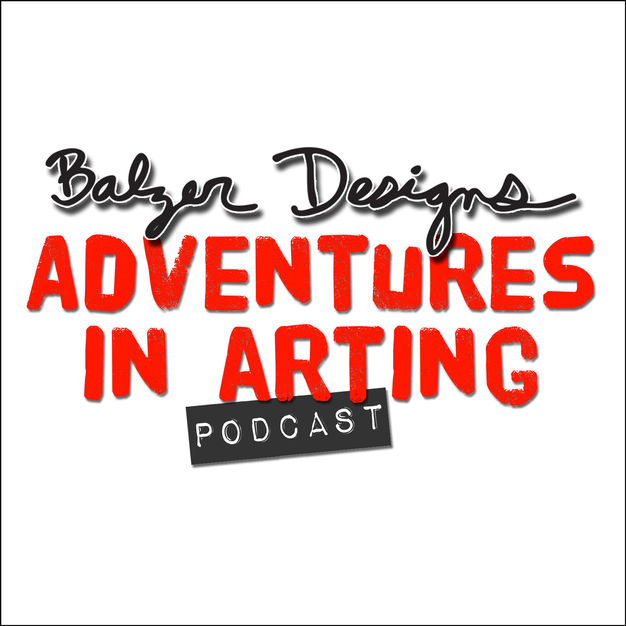
Podcast – Adventures in Arting Podcast
Julie Fei-Fan Balzer
Hosted by Mother and Daughter Eileen Hsü-Balzer and Julie Fei-Fan Balzer, the Adventures in Arting podcast is a lively discussion of artful living. Topics range from creating art (painting, sewing, scrapbooking, lampworking, etc.) to viewing art (museums, galleries, the theatre, etc.) to the artful home (cooking, dressing, decorating etc.) to managing a career in the arts. All aspects of arting are discussed between the two hosts, as well as with a variety of guests.
- 1 hour 16 minutes164: Drawing at the Danforth

On this podcast (recorded over three weeks), I share my highs and lows, break throughs and frustrations with a drawing class I’m taking at the Danforth Art Museum in Framingham, MA.
Overall, this experience reminded me that the creative process often involves pushing beyond simple exercises. It’s about synthesis — connecting ideas — and allowing for unexpected discoveries. The key is to continually experiment and to lean into the structure of your art practice for support.
Links:
- Tip the Artist: PayPal.Me/balzerdesigns
- Sign up for the Friday FREE newsletter: https://forms.feedblitz.com/bco
- Monthly Membership: https://www.myartpractice.com/
- Take an online class: https://balzerdesigns.com/Classroom/
- Shop: https://www.juliebalzer.com/shop.html
- Let’s connect on instagram: https://www.instagram.com/balzerdesigns/
- Favorite Things: https://www.amazon.com/shop/balzerdesigns
Thanks for listening and subscribing!
8 August 2024, 9:07 pm - 37 minutes 57 seconds163 – Artwork Statements Aren’t Easy
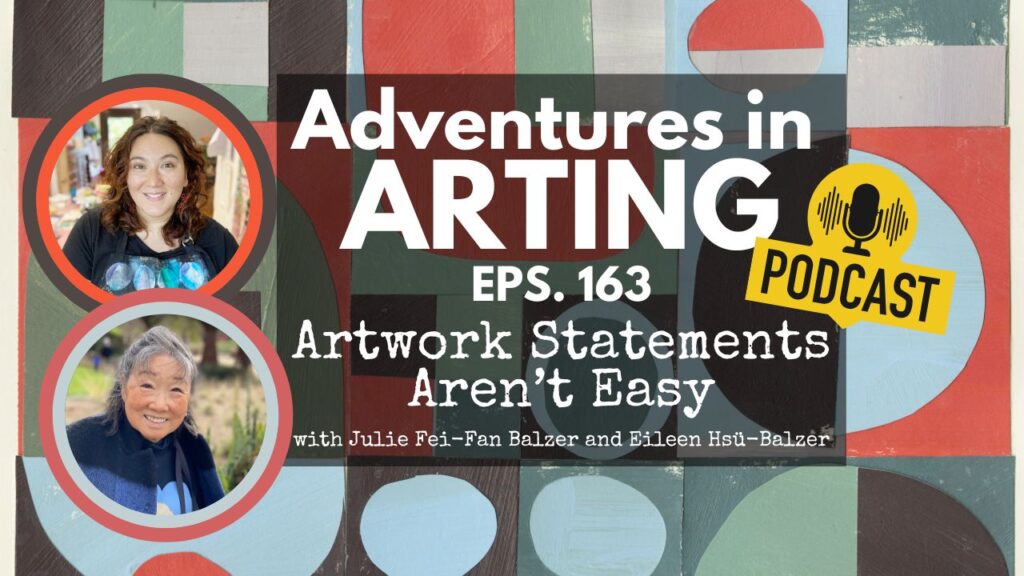
An Artwork Statement is a piece of writing that gives context to a specific artwork. It often explains the meaning, inspiration, techniques, and context behind a specific artwork or series. Your statement may address the materials used, the process, and the narrative or concept behind the piece.
The purpose is to provide deeper insight into a particular piece, helping viewers connect with and understand the specific artwork on a more intimate level. It often accompanies the artwork in exhibitions, galleries, or online platforms.
On the podcast, Mom and I give you lots of tips for how you can write amazing artwork statements!
Links:
- Tip the Artist: PayPal.Me/balzerdesigns
- Sign up for the Friday FREE newsletter: https://forms.feedblitz.com/bco
- Monthly Membership: https://www.myartpractice.com/
- Take an online class: https://balzerdesigns.com/Classroom/
- Shop: https://www.juliebalzer.com/shop.html
- Let’s connect on instagram: https://www.instagram.com/balzerdesigns/
- Favorite Things: https://www.amazon.com/shop/balzerdesigns
Thanks for listening and subscribing!
1 August 2024, 4:23 pm - 1 hour 1 minute162: Why Do You Host This Podcast with Your Mom?
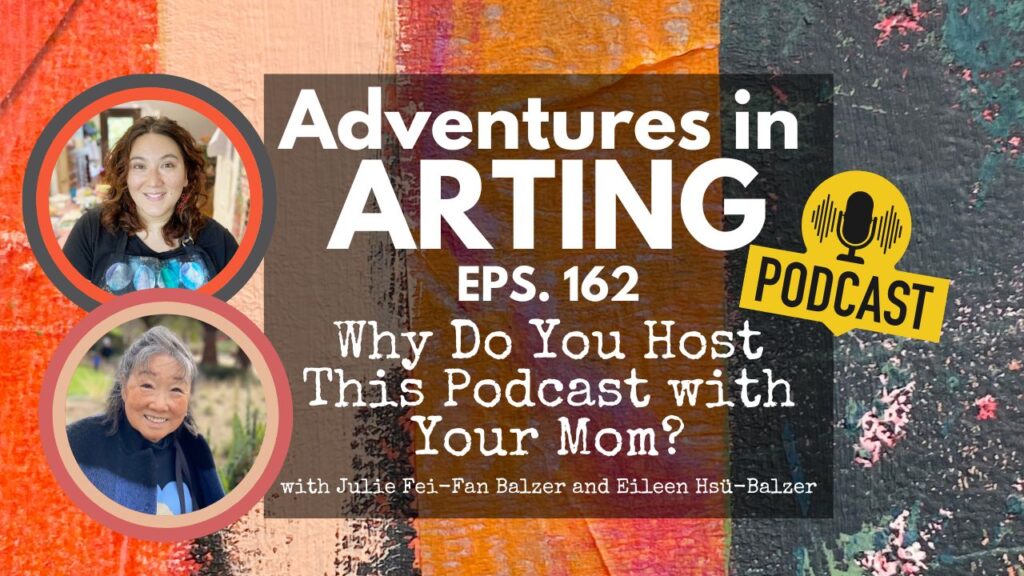
This episode covers the Adventures in Arting podcast’s origin story, technical challenges, evolution, ups and downs, and the significance of surpassing 21 episodes, and most importantly: a bit about Mom’s upbringing and relationship to art.
And as always, you get to enjoy the dynamic between us — our banter, shared experiences, and future plans for the podcast. The podcast blends personal anecdotes, technical insights, and reflections on the growth and dedication that drive us both!
Links:
- Tip the Artist: PayPal.Me/balzerdesigns
- Sign up for the Friday FREE newsletter: https://forms.feedblitz.com/bco
- Monthly Membership: https://www.myartpractice.com/
- Take an online class: https://balzerdesigns.com/Classroom/
- Shop: https://www.juliebalzer.com/shop.html
- Let’s connect on instagram: https://www.instagram.com/balzerdesigns/
- Favorite Things: https://www.amazon.com/shop/balzerdesigns
Thanks for listening and subscribing!
25 July 2024, 3:45 pm - 53 minutes 46 seconds161: Angela Fehr

From her home in northern British Columbia, Canada, through her video lessons on her website and YouTube, Angela Fehr has created a community of watercolor lovers that spans the globe.
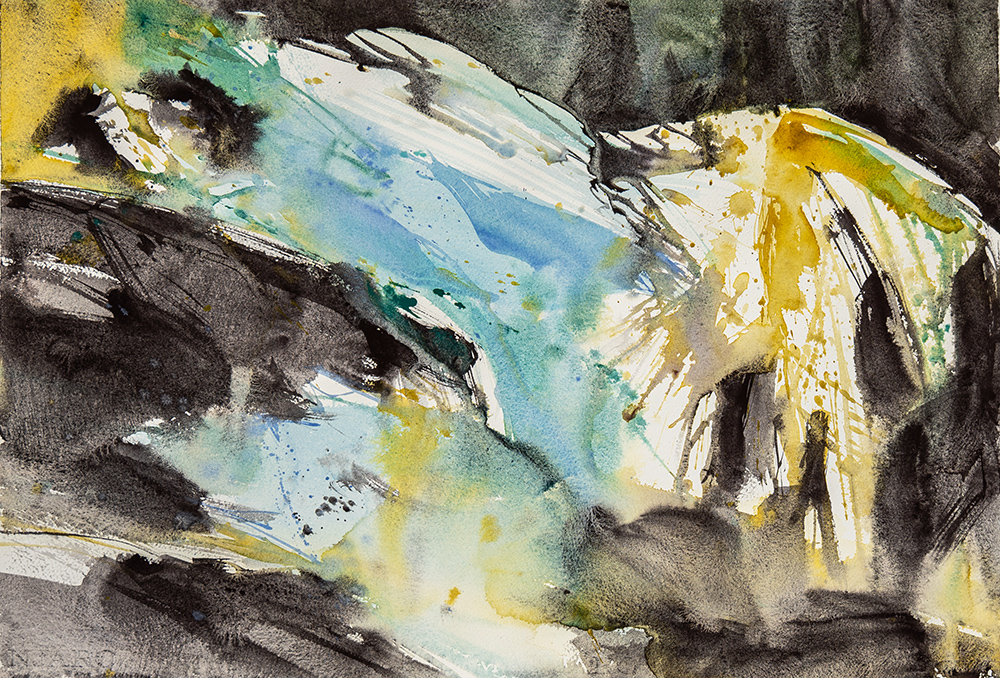
She wants every painter to know the freedom of fearless self expression and she has made it her mission to share this empowering message through lessons in heart-prioritizing watercolour technique and loose intuitive painting.
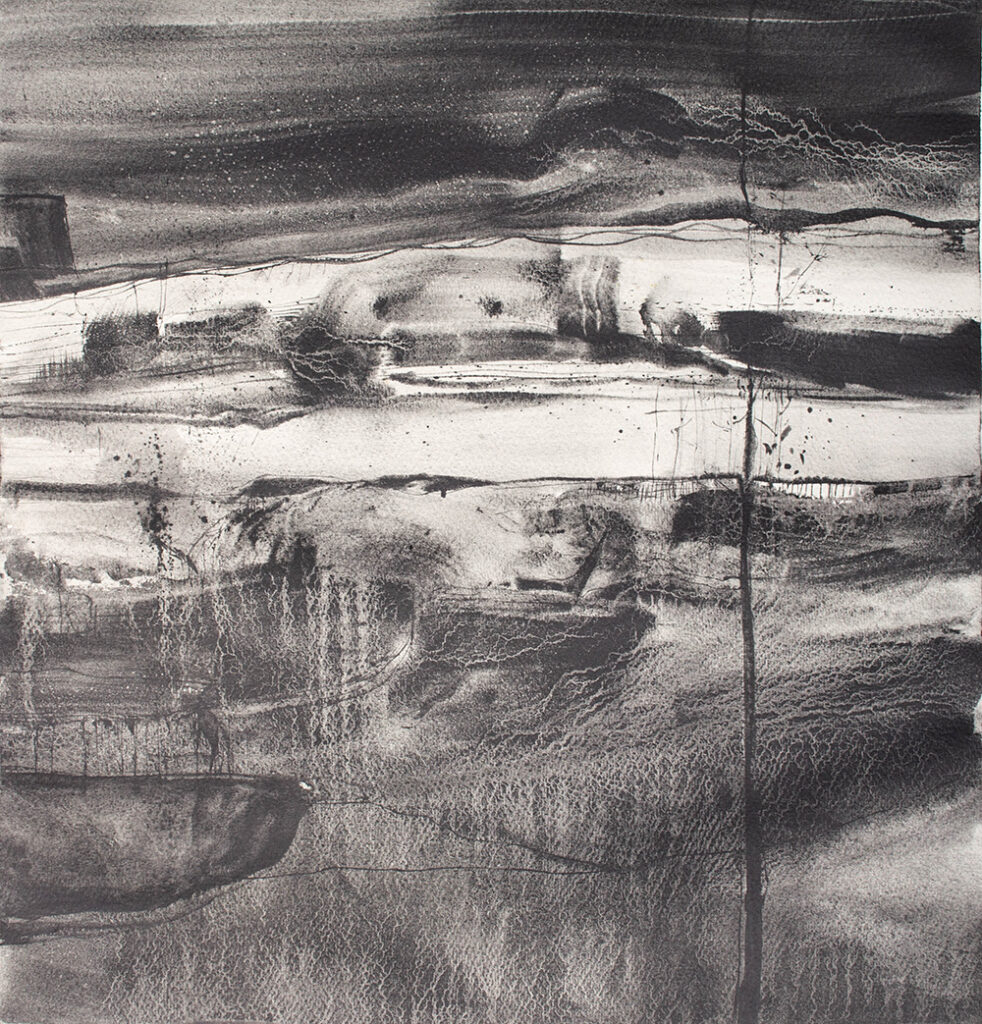
More than anything she demonstrates that the most important thing you bring to your art is you.
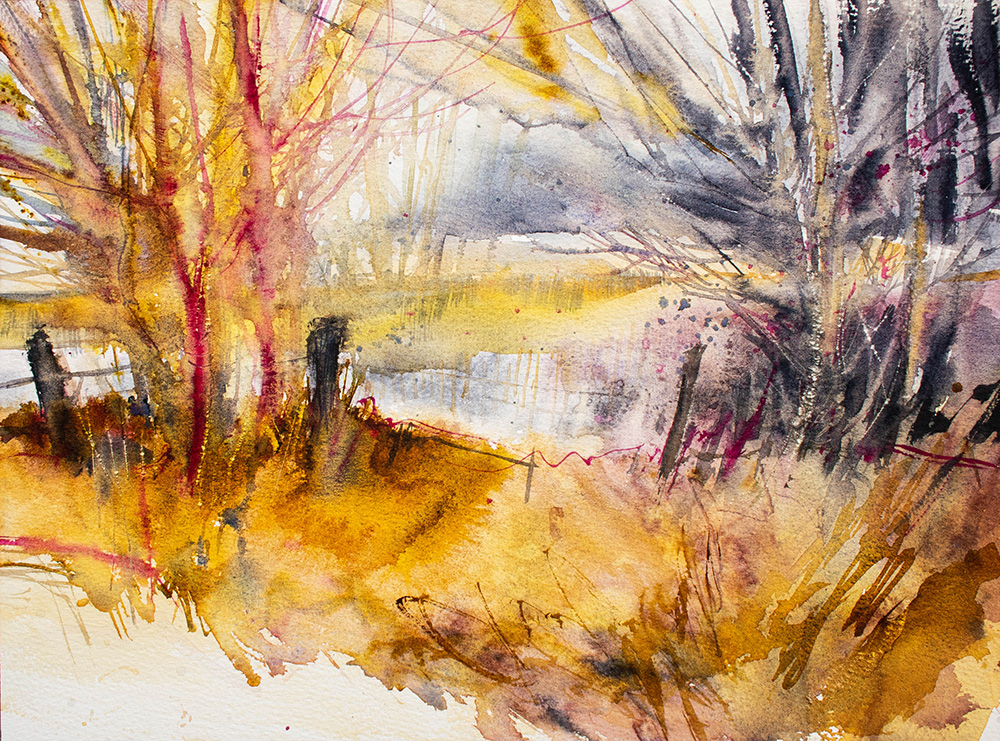
On the podcast we discuss Angela’s art journey and why she does what she does.
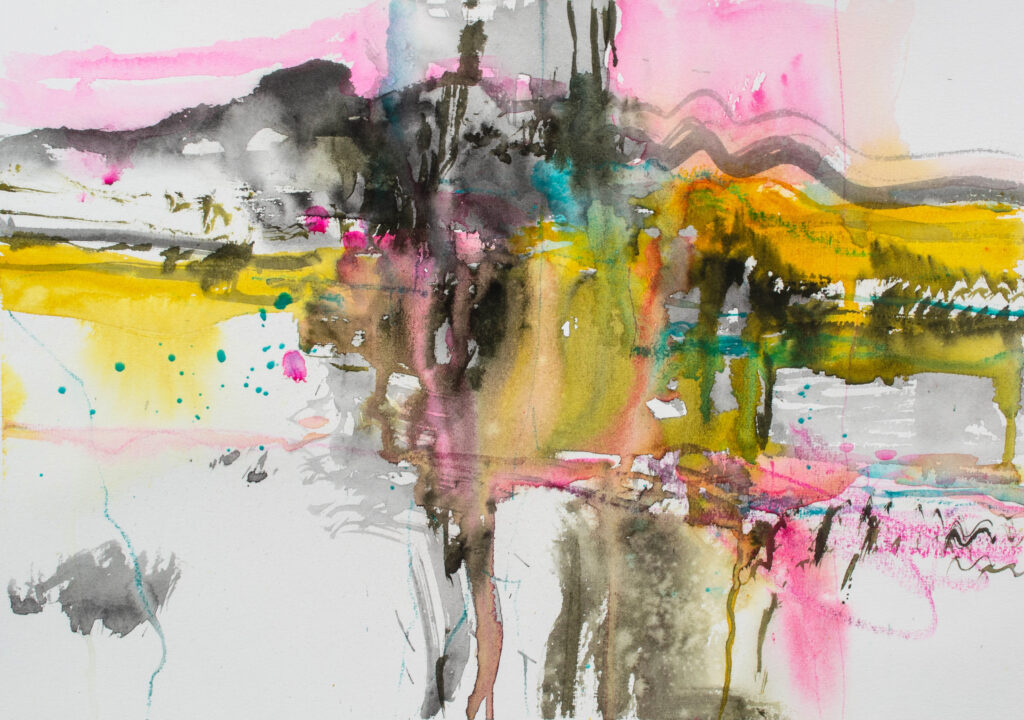
Find Angela Online:
- https://angelafehr.com
- Online Courses at https://www.heartledartist.com
- https://instagram.com/angelfehr
- https://youtube.com/angelfehr
- https://facebook.com/angelafehrartist
Links:
- Tip the Artist: PayPal.Me/balzerdesigns
- Sign up for the Friday FREE newsletter: https://forms.feedblitz.com/bco
- Monthly Membership: https://www.myartpractice.com/
- Take an online class: https://balzerdesigns.com/Classroom/
- Shop: https://www.juliebalzer.com/shop.html
- Let’s connect on instagram: https://www.instagram.com/balzerdesigns/
- Favorite Things: https://www.amazon.com/shop/balzerdesigns
Thanks for listening and subscribing!
18 July 2024, 4:29 pm - 54 minutes 33 seconds160: Growth Mindset
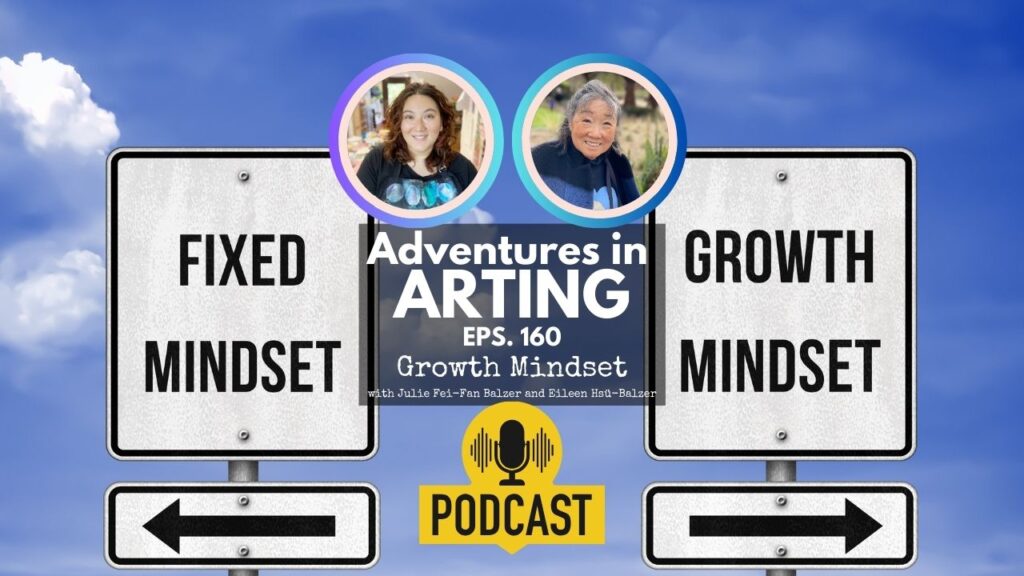
Today on the podcast we’re chatting about Growth Mindset vs. Fixed Mindset:
Growth Mindset:
- Definition: A growth mindset is the belief that abilities and intelligence can be developed with effort, learning, and persistence.
- Characteristics: Embracing challenges, persisting through setbacks, seeing effort as a path to mastery, learning from criticism, and finding inspiration in others’ success.
- Example: A person with a growth mindset will likely believe that they can improve their painting skills through practice and learning.
Fixed Mindset:
- Definition: A fixed mindset is the belief that abilities and intelligence are static traits that cannot be significantly developed.
- Characteristics: Avoiding challenges, giving up easily, seeing effort as fruitless, ignoring useful feedback, and feeling threatened by others’ success.
- Example: A person with a fixed mindset might believe that they are either naturally talented at painting or not, and no amount of practice can change that.
Be sure to listen to the podcast where I share 10 Fixed Mindset Statements (such as “I can’t draw”) that you can easily transform to Growth Mindset Statements (such as “I don’t know how to draw yet, but I can improve my drawing skills with practice and dedication.”)
Links:
- Tip the Artist: PayPal.Me/balzerdesigns
- Sign up for the Friday FREE newsletter: https://forms.feedblitz.com/bco
- Monthly Membership: https://www.myartpractice.com/
- Take an online class: https://balzerdesigns.com/Classroom/
- Shop: https://www.juliebalzer.com/shop.html
- Let’s connect on instagram: https://www.instagram.com/balzerdesigns/
- Favorite Things: https://www.amazon.com/shop/balzerdesigns
Thanks for listening and subscribing!
11 July 2024, 9:40 pm - 46 minutes 19 seconds159: Focus
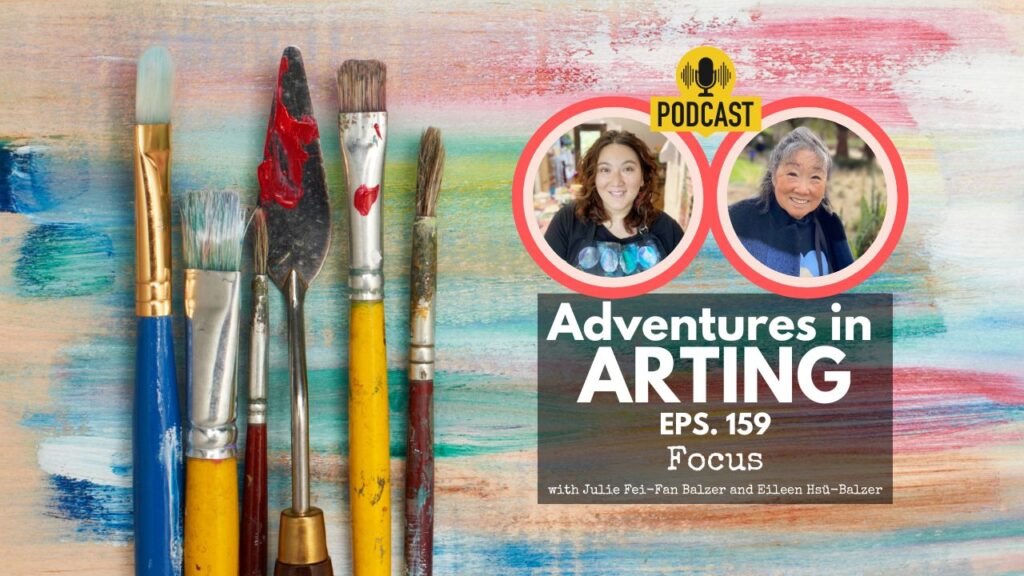
Lydia Leonard left this comment on my YouTube channel:
“I’ve been following you for years and always marvel at your genius! Moving walls? So smart! I sort of have the same thing but I have a hard time putting everything back where it belongs! I’ve been trying to reorganize but I get distracted by all the cool things I find. Do you have any focusing ideas to keep me motivated?“
Specific to her magpie issue, which is also an issue I have, is the notion of “future me.” I do things for future me.
“Tomorrow me will love that this is all put away. Tomorrow me will be glad that I did this today.”
But I thought we could wander into a larger conversation about focus. One of the tenets of my art practice is “consistency.” I think consistency and focus are deeply intertwined.
- Focus is a point of concentration. 2. : directed attention : emphasis.
- Consistency is conformity in the application of something, typically that which is necessary for the sake of logic, accuracy, or fairness.
Consistency is running a steady 6 minute mile during a marathon. Focus is thinking about your breathing, the finish line, how your body is moving.
All of that is to say that focus is part of consistency and consistency requires focus. On the podcast, we talk about why focus matters to an artist.
Links:
- Tip the Artist: PayPal.Me/balzerdesigns
- Sign up for the Friday FREE newsletter: https://forms.feedblitz.com/bco
- Monthly Membership: https://www.myartpractice.com/
- Take an online class: https://balzerdesigns.com/Classroom/
- Shop: https://www.juliebalzer.com/shop.html
- Let’s connect on instagram: https://www.instagram.com/balzerdesigns/
- Favorite Things: https://www.amazon.com/shop/balzerdesigns
Thanks for listening and subscribing!
27 June 2024, 6:11 pm - 52 minutes 8 seconds158: Listener Mail
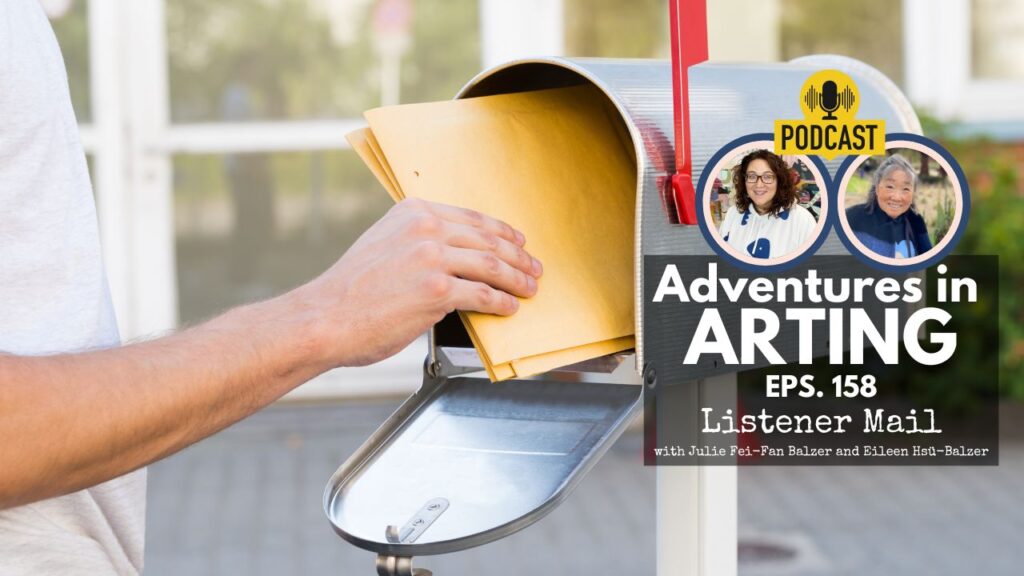
I like to think of the podcast as a conversation — between me and Mom — between me and Mom and a guest — between me and Mom and YOU! Thank you so much to all of you who leave comments and send emails. We read them all and appreciate them all. This Listener Mail episode is packed with so many thoughtful comments from you guys! Thanks!
Links:
- Tip the Artist: PayPal.Me/balzerdesigns
- Sign up for the Friday FREE newsletter: https://forms.feedblitz.com/bco
- Monthly Membership: https://www.myartpractice.com/
- Take an online class: https://balzerdesigns.com/Classroom/
- Shop: https://www.juliebalzer.com/shop.html
- Let’s connect on instagram: https://www.instagram.com/balzerdesigns/
- Favorite Things: https://www.amazon.com/shop/balzerdesigns
Thanks for listening and subscribing!
20 June 2024, 3:31 pm - 157: Art in Bloom: Part 2

As I mentioned in the previous podcast, Mom and I snuck in the night before the Museum of Fine Arts (MFA) here in Boston — The museum’s annual Art in Bloom event at the end of April. This is always one of my favorite events of the year.
In case you don’t know what Art in Bloom is: It’s a weekend festival that transforms the MFA’s galleries into a floral showcase, with floral designers and garden clubs from across the region carefully crafting arrangements inspired by the museum’s artworks.
The MFA invented the “Art in Bloom” idea in 1976. Since then many other museums have taken up the idea (it’s a good one) and there might be a museum near you that does it!
“Visitors are treated to a sensory experience as they wander through the galleries adorned with imaginative floral interpretations. The captivating aromas of freshly cut blossoms fill the air, while the visual delight of artfully arranged blooms against the backdrop of world-class art stirs the imagination. The juxtaposition of natural elements with centuries-old masterpieces creates a dialogue that transcends time and medium, inviting visitors to see art from a fresh perspective.”
It’s also an invitation for selfies galore and just tons of photos in general. This is why we went the night before.
The main feature of Art in Bloom is the collaboration between floral designers and the museum’s curators. Each floral arrangement is carefully placed next to its corresponding artwork, enhancing the aesthetic experience and creating a captivating conversation between the two art forms. And a fun conversation to have with a fellow visitor about how/if the floral arrangement captures the artwork’s essence. There is no other time of the year when strangers are so willing to talk to you!
Art in Bloom is always a super fun experience. If a museum near you holds an annual “Art in Bloom” festival, be sure to attend. It’s an experience you won’t want to miss! Because these are real blooms, it’s always a short exhibit – 3 or 4 days. So don’t miss out!
Here are the photos from the podcast, in the order we discuss them:
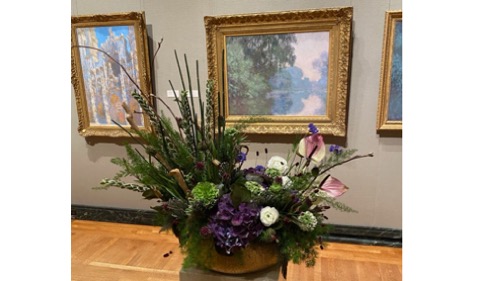
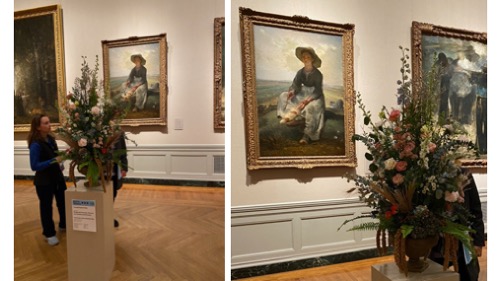
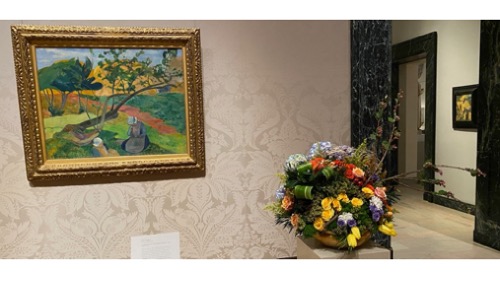

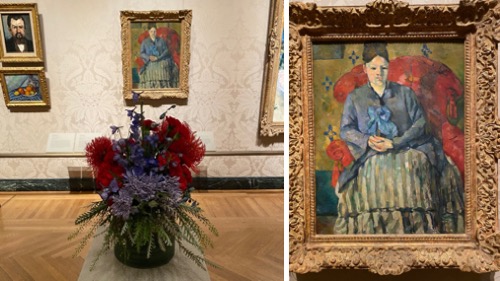
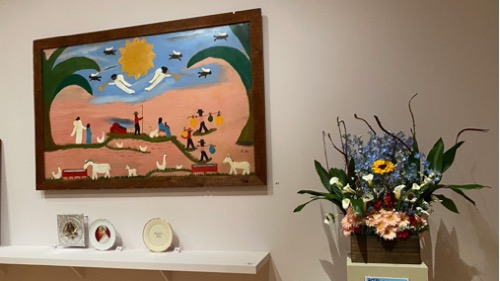

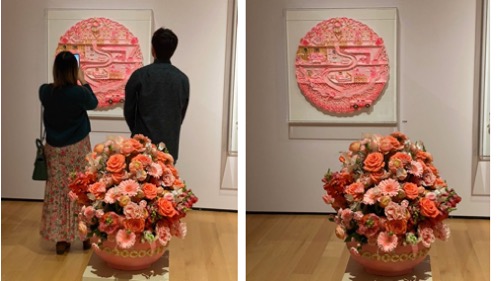


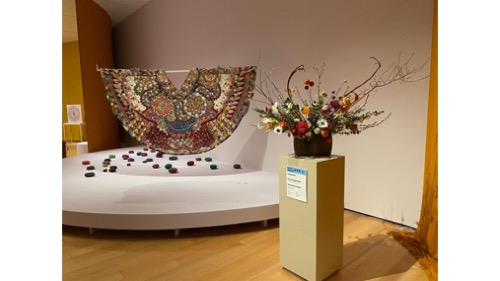
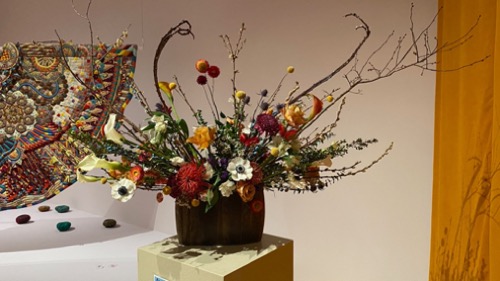
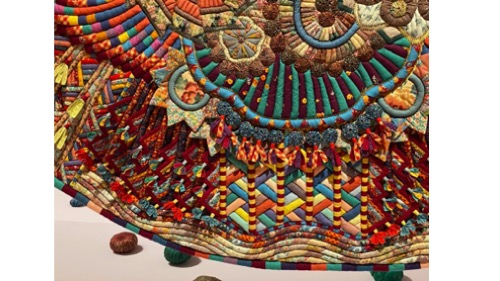
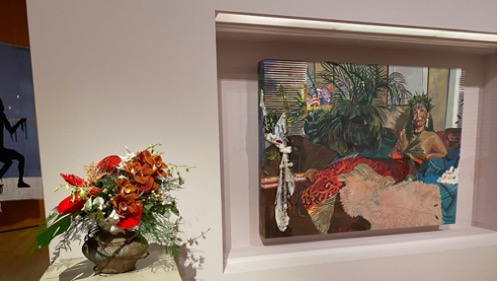
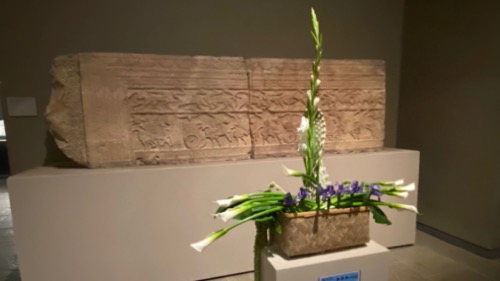
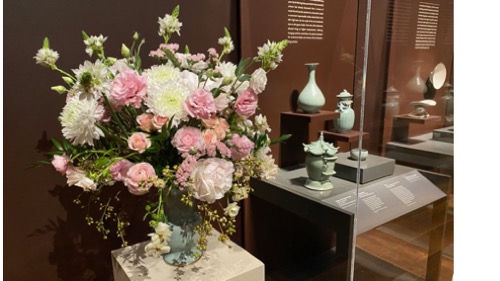
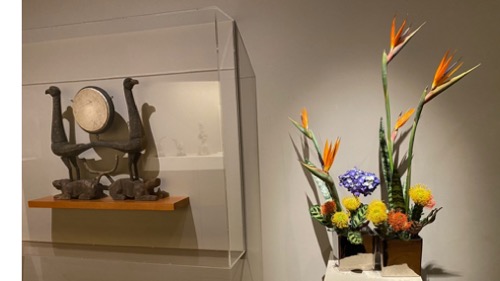


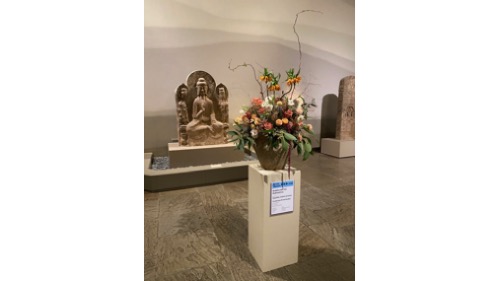
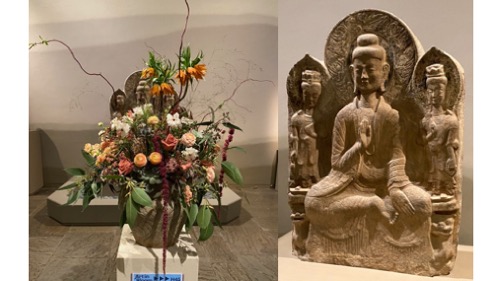

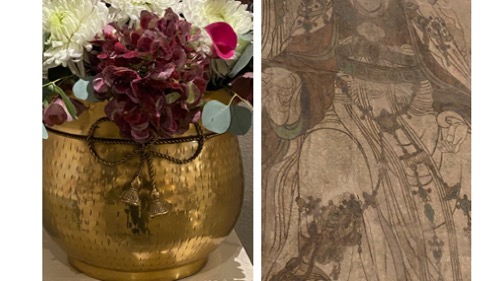
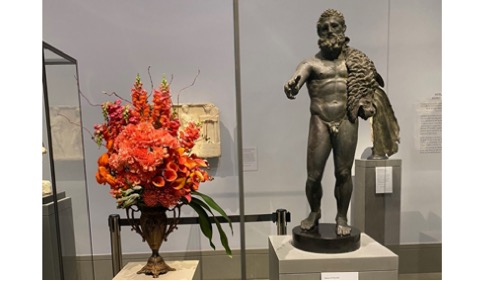
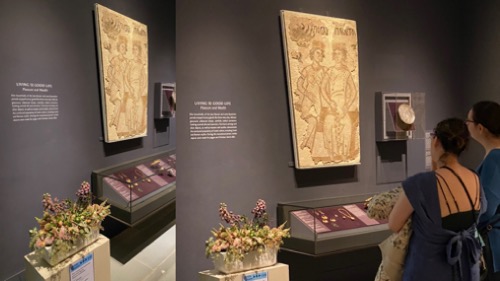
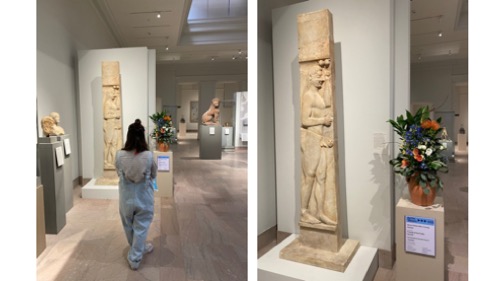



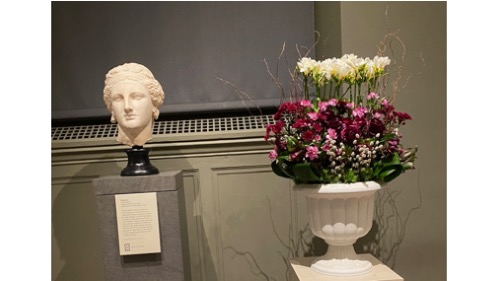
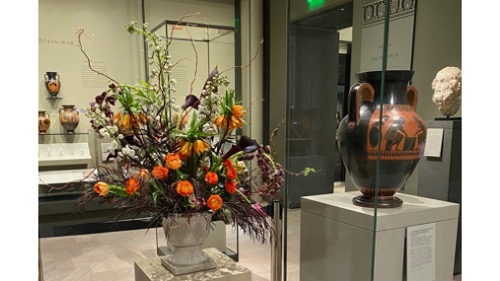


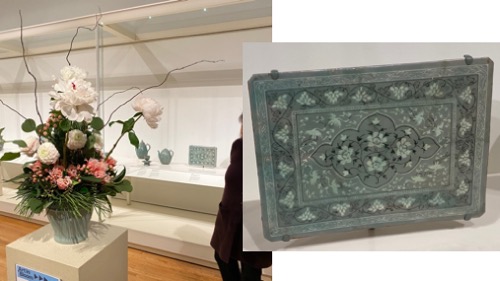
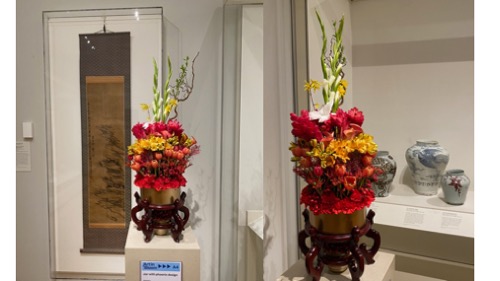

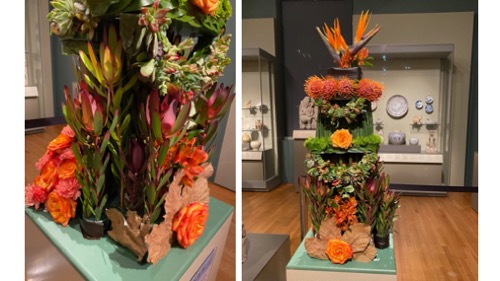
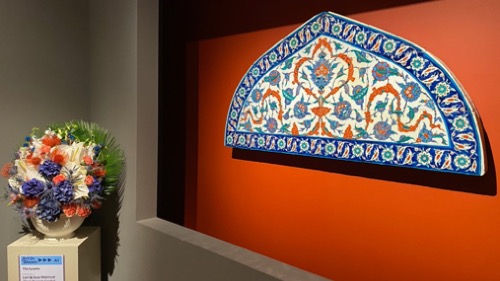

Links:
- Tip the Artist: PayPal.Me/balzerdesigns
- Sign up for the Friday FREE newsletter: https://forms.feedblitz.com/bco
- Monthly Membership: https://www.myartpractice.com/
- Take an online class: https://balzerdesigns.com/Classroom/
- Shop: https://www.juliebalzer.com/shop.html
- Let’s connect on instagram: https://www.instagram.com/balzerdesigns/
- Favorite Things: https://www.amazon.com/shop/balzerdesigns
Thanks for listening and subscribing!
13 June 2024, 3:38 pm - 1 hour 10 minutes156: Art in Bloom: Part One

Mom and I snuck in the night before the Museum of Fine Arts (MFA) here in Boston — The museum’s annual Art in Bloom event at the end of April. This is always one of my favorite events of the year.
In case you don’t know what Art in Bloom is: It’s a weekend festival that transforms the MFA’s galleries into a floral showcase, with floral designers and garden clubs from across the region carefully crafting arrangements inspired by the museum’s artworks.
The MFA invented the “Art in Bloom” idea in 1976. Since then many other museums have taken up the idea (it’s a good one) and there might be a museum near you that does it!
“Visitors are treated to a sensory experience as they wander through the galleries adorned with imaginative floral interpretations. The captivating aromas of freshly cut blossoms fill the air, while the visual delight of artfully arranged blooms against the backdrop of world-class art stirs the imagination. The juxtaposition of natural elements with centuries-old masterpieces creates a dialogue that transcends time and medium, inviting visitors to see art from a fresh perspective.”
It’s also an invitation for selfies galore and just tons of photos in general. This is why we went the night before.
The main feature of Art in Bloom is the collaboration between floral designers and the museum’s curators. Each floral arrangement is carefully placed next to its corresponding artwork, enhancing the aesthetic experience and creating a captivating conversation between the two art forms. And a fun conversation to have with a fellow visitor about how/if the floral arrangement captures the artwork’s essence. There is no other time of the year when strangers are so willing to talk to you!
Art in Bloom is always a super fun experience. If a museum near you holds an annual “Art in Bloom” festival, be sure to attend. It’s an experience you won’t want to miss! Because these are real blooms, it’s always a short exhibit – 3 or 4 days. So don’t miss out!
Here are the photos from the podcast, in the order we discuss them:
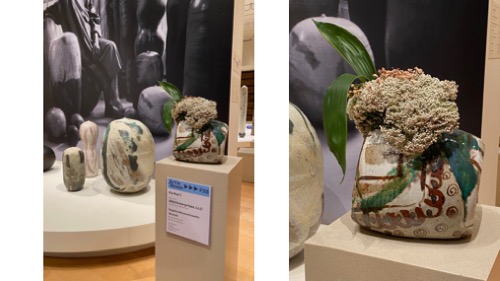
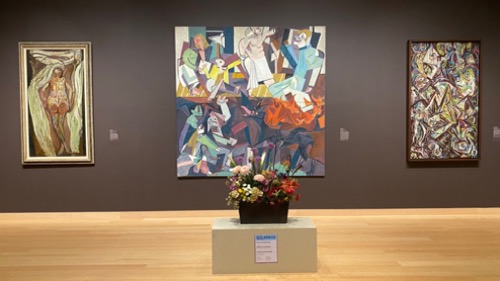

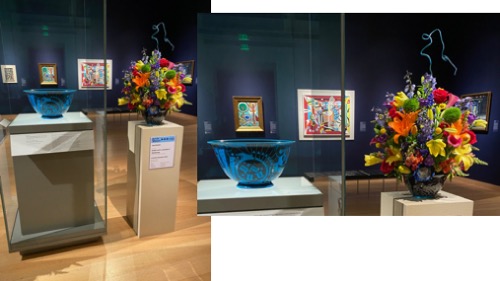
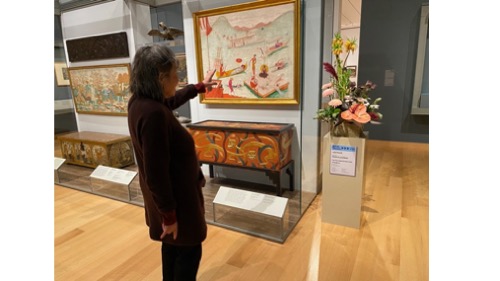
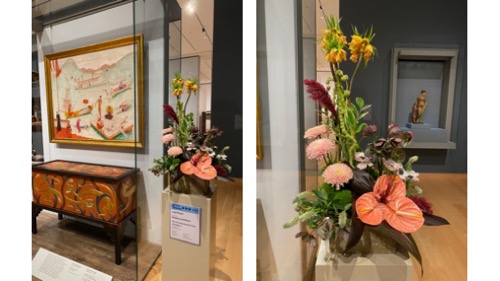



















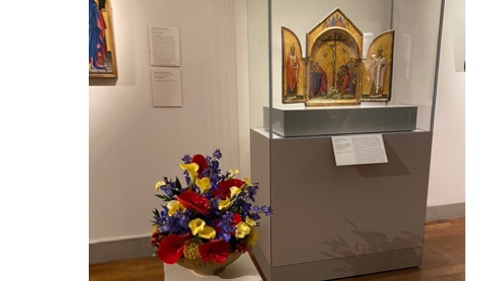
Links:
- Tip the Artist: PayPal.Me/balzerdesigns
- Sign up for the Friday FREE newsletter: https://forms.feedblitz.com/bco
- Monthly Membership: https://www.myartpractice.com/
- Take an online class: https://balzerdesigns.com/Classroom/
- Shop: https://www.juliebalzer.com/shop.html
- Let’s connect on instagram: https://www.instagram.com/balzerdesigns/
- Favorite Things: https://www.amazon.com/shop/balzerdesigns
Thanks for listening and subscribing!
6 June 2024, 5:21 pm - 155: The Parts of My Art Practice

The title of this episode is a bit of a double entendre. We’re going to discuss my personal art practice and the parts I’ve devised for it, but in doing so, we’ll also be discussing the framework I’m using for the online community: My Art Practice. On the podcast I begin by talking about where the idea for My Art Practice came from and then I talk you through the vision…

…the various parts of the core curriculum…

…and then what I think you’ll take away from the membership:

I hope you’ll invest in yourself and join the My Art Practice community!

Reaching your art goals takes more than just techniques. It’s about creating an art practice that suits you, your schedule, and your goals. Don’t just learn art, make it a sustainable lifestyle. Create your unique journey with My Art Practice, because your art is about you. Join today.
Links:
- Tip the Artist: PayPal.Me/balzerdesigns
- Sign up for the Friday FREE newsletter: https://forms.feedblitz.com/bco
- Monthly Membership: https://www.myartpractice.com/
- Take an online class: https://balzerdesigns.com/Classroom/
- Shop: https://www.juliebalzer.com/shop.html
- Let’s connect on instagram: https://www.instagram.com/balzerdesigns/
- Favorite Things: https://www.amazon.com/shop/balzerdesigns
Thanks for listening and subscribing!
29 May 2024, 3:10 pm - 1 hour 21 seconds154: Inspiration to Action with Carolyn Dube
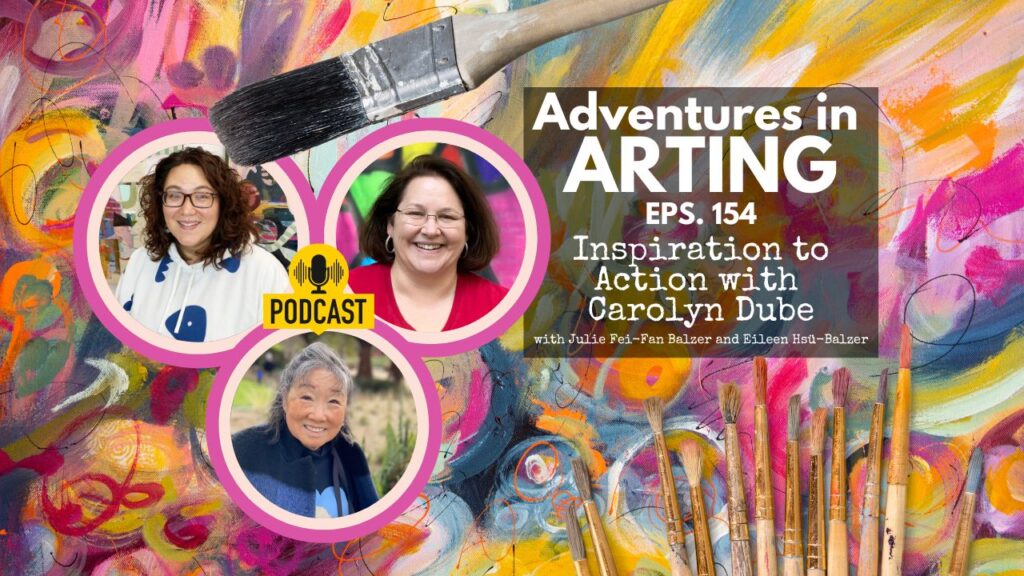
We have a very special guest for this episode of The Adventures in Arting Podcast: Carolyn Dube!

Carolyn Dube is a mixed media art explorer and educator who found freedom through play.
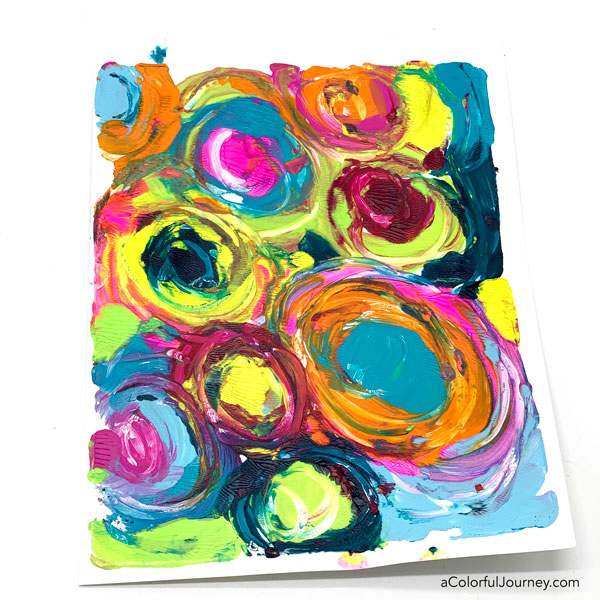
She explores the colors of the rainbow, avoids rules whenever possible, and lets the little kid inside her free as she shares her colorful journey.

You can find her sharing the play at aColorfulJourney.com, designing stencils for StencilGirl Products and teaching workshops.

On the podcast we discuss how to turn inspiration into action. Carolyn has been a guest on the podcast before – back in May 2020 on Episode 99: Carolyn says Oops. So, if you want more, go back and listen to episode 99.

And don’t forget that Carolyn is the Guest Artist during this cycle at My Art Practice.

This is your reminder to visit MyArtPractice.com on Monday, May 27, 2024 and sign up.
Ask yourself if what you’re doing today is getting you closer to where you want to be tomorrow.
Let My Art Practice help you reach your art goals. The sign up period begins on Monday, May 27 and runs for one week. Membership won’t reopen until August 2024.
Links:
- Carolyn’s Website: https://acolorfuljourney.com/
- Carolyn’s YouTube: https://www.youtube.com/@CarolynDube
- Carolyn’s Instagram: https://www.instagram.com/carolyn_dube/
- Tip the Artist: PayPal.Me/balzerdesigns
- Sign up for the Friday FREE newsletter: https://forms.feedblitz.com/bco
- Monthly Membership: https://www.myartpractice.com/
- Take an online class: https://balzerdesigns.com/Classroom/
- Shop: https://www.juliebalzer.com/shop.html
- Let’s connect on instagram: https://www.instagram.com/balzerdesigns/
- Favorite Things: https://www.amazon.com/shop/balzerdesigns
Thanks for listening and subscribing!
23 May 2024, 3:54 pm - More Episodes? Get the App
Your feedback is valuable to us. Should you encounter any bugs, glitches, lack of functionality or other problems, please email us on [email protected] or join Moon.FM Telegram Group where you can talk directly to the dev team who are happy to answer any queries.
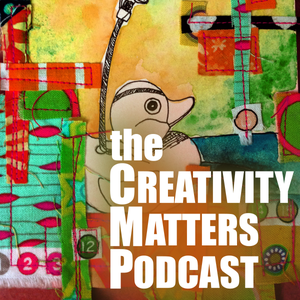 Creativity Matters Podcast (CMP)
Creativity Matters Podcast (CMP)
 Art Supply Posse
Art Supply Posse
 How She Creates Podcast
How She Creates Podcast
 Crafty Ass Female
Crafty Ass Female
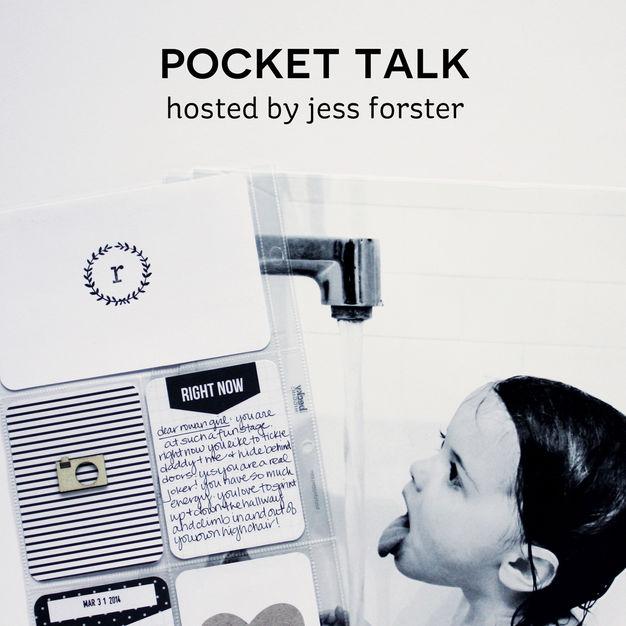 Pocket Talk
Pocket Talk
 This Memory Keeper's Life
This Memory Keeper's Life